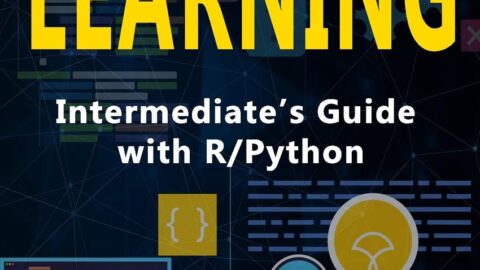
Price: $39.99
(as of Jun 24, 2025 02:01:27 UTC – Details)
Introduction to Bayesian Networks in Machine Learning
Bayesian networks are probabilistic graphical models that use graph theory and probability theory to represent and reason about uncertainty and causal relationships in complex systems. In machine learning, Bayesian networks have become a powerful tool for modeling and analyzing large and complex datasets, allowing researchers and practitioners to identify hidden patterns and dependencies that would be difficult or impossible to detect with traditional statistical methods.
The idea of Bayesian networks dates back to the work of Reverend Thomas Bayes, an 18th-century mathematician and theologian, who developed a mathematical formula for calculating the probability of an event based on prior knowledge and new evidence. However, it wasn’t until the 1980s and 1990s that the formal theory and methodology of Bayesian networks were developed and popularized by researchers such as Judea Pearl, David Heckerman, and Daphne Koller.
At its core, a Bayesian network consists of a directed acyclic graph (DAG) that represents a set of variables and their conditional dependencies. Each node in the graph represents a random variable, and the directed edges represent the causal relationships between the variables. The probability of each node is calculated based on its parents in the graph, using Bayes’ theorem and the chain rule of probability.
One of the key advantages of Bayesian networks is their ability to handle uncertainty and incomplete data. By modeling the conditional dependencies between variables, Bayesian networks can make probabilistic inferences about the state of the system even when some of the variables are missing or noisy. This makes them especially useful in domains such as medical diagnosis, financial forecasting, and risk assessment.
In recent years, Bayesian networks have been integrated with other machine learning techniques such as deep learning and reinforcement learning, to create hybrid models that combine the strengths of different approaches. For example, Bayesian deep learning uses Bayesian inference to estimate the uncertainty of the weights and biases in a neural network, allowing it to make more robust and reliable predictions.
Despite their many benefits, Bayesian networks also face some challenges and limitations. For example, they can be computationally expensive to train and inference, especially for large datasets and complex models. Additionally, the subjective nature of prior probabilities can introduce bias and affect the accuracy of the results.
In the following chapters, we will explore the fundamentals and applications of Bayesian networks in more detail, and examine the key techniques and methods used to learn and reason with these models. We will also examine some of the real-world applications of Bayesian networks in areas such as healthcare, finance, and natural language processing, and discuss the future directions and challenges facing this exciting field.
ASIN : B0C529LX9D
Accessibility : Learn more
Publication date : May 11, 2023
Language : English
File size : 1.2 MB
Simultaneous device usage : Unlimited
Screen Reader : Supported
Enhanced typesetting : Enabled
X-Ray : Not Enabled
Word Wise : Not Enabled
Print length : 41 pages
Page Flip : Enabled











